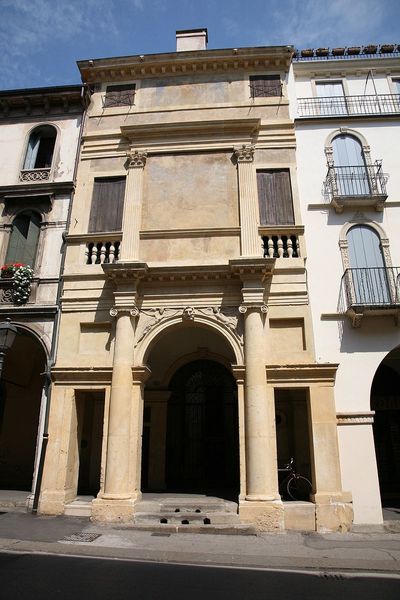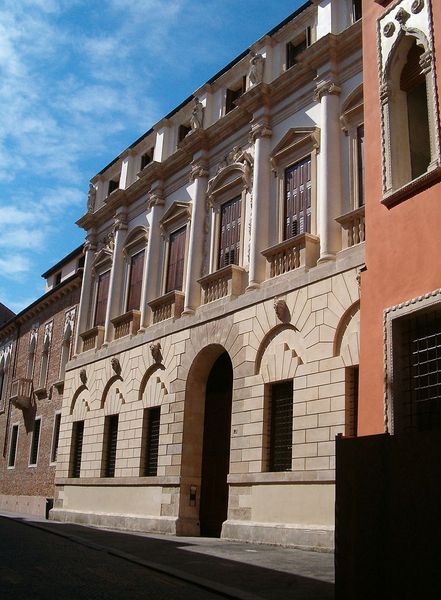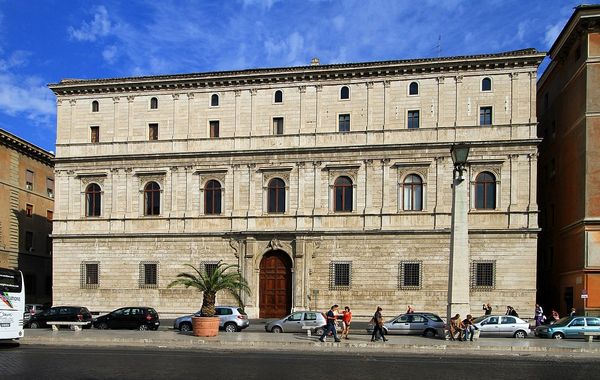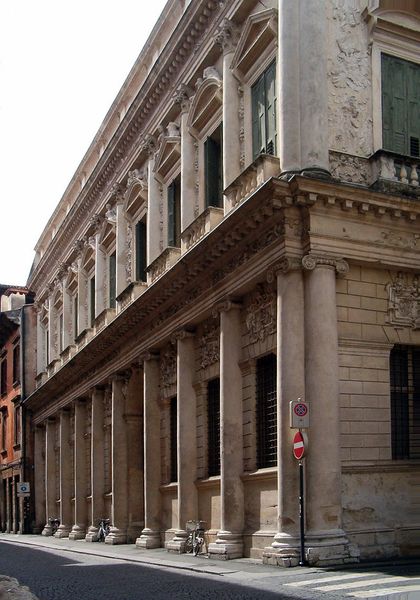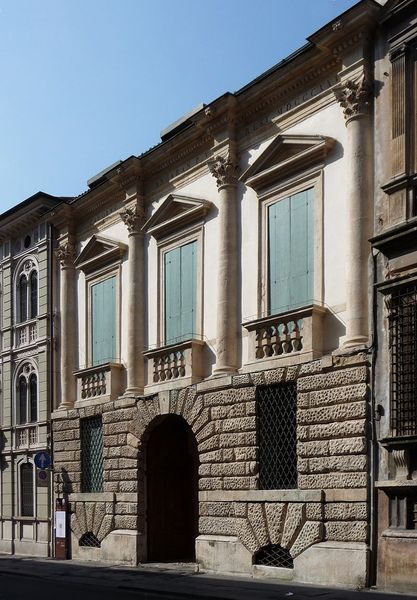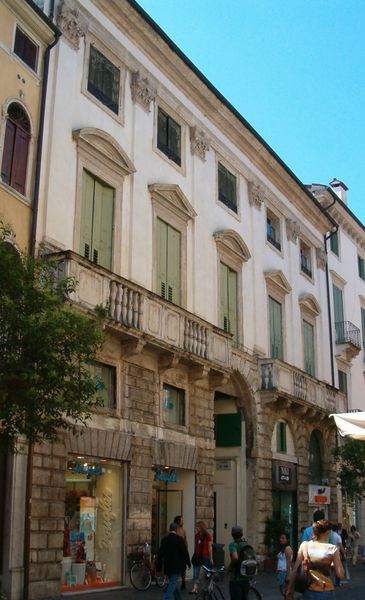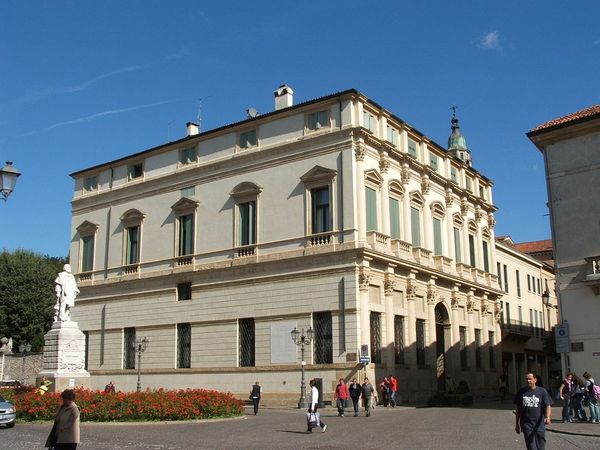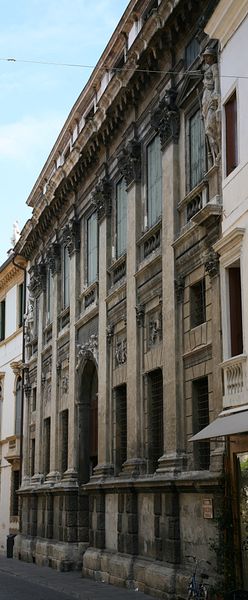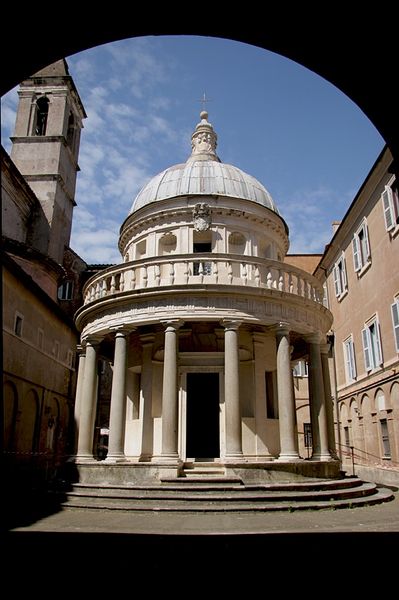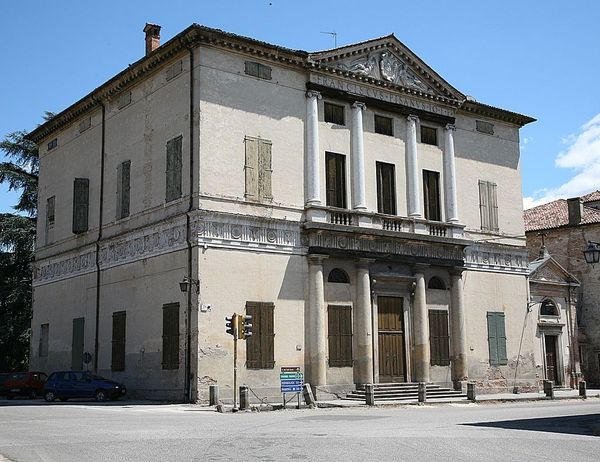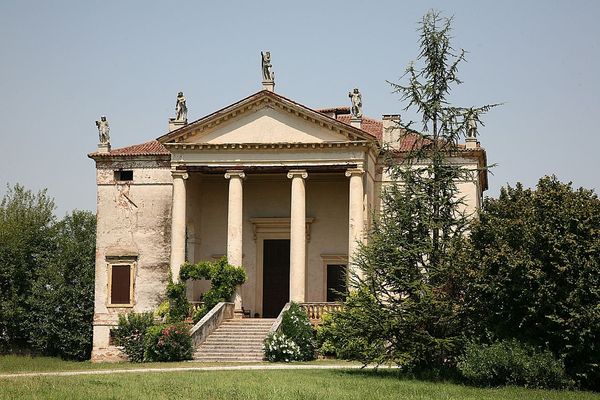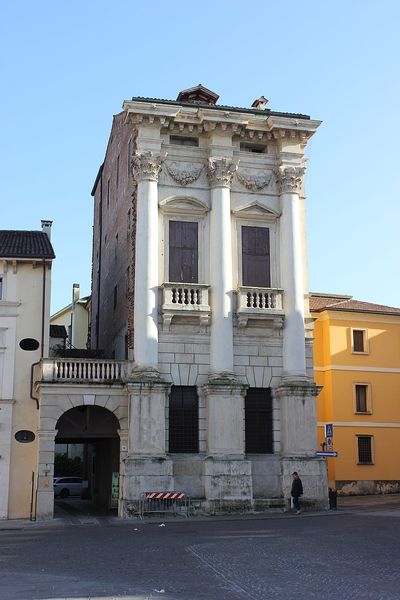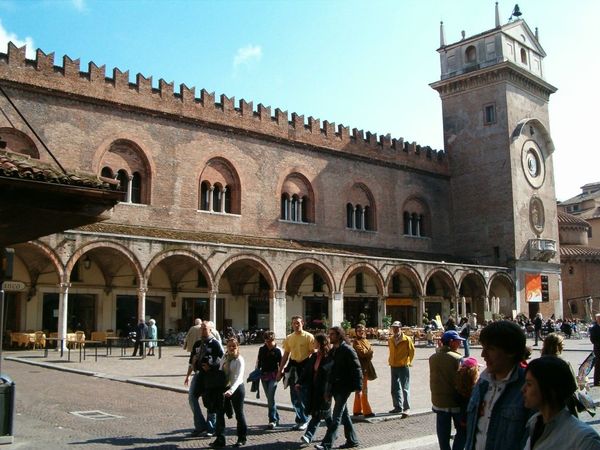
public-art, architecture
#
public art
#
public-art
#
11_renaissance
#
classicism
#
italian-renaissance
#
architecture
Copyright: Public domain
Curator: Here we have Andrea Palladio’s Palazzo del Capitaniato in Vicenza, completed in 1565. This magnificent Renaissance building functions as a piece of public art as much as civic architecture. Editor: My first thought is… ambitious. Almost aggressively symmetrical, if that makes sense. Like a Roman temple crashed a very important Italian government meeting. Curator: Precisely! Palladio was deeply influenced by classical Roman architecture, and he sought to revive those ideals of harmony and proportion. It was conceived during a time when the Venetian empire was still dominant, so they wanted to reflect their might and grandeur. It served as the Lieutenant’s Loggia, who was representing Venice at that time. Editor: The red brick pops! I almost expect it to feel cold, like some grand marble structure, but the texture… it feels alive, like warm blood coursing through it. How intentional was it, this blending of imperial, I guess…coldness…with the warmth of home? Curator: It's an excellent observation. Palladio strategically combined different materials and styles to convey messages. Using brick, though he also employed stone, it could perhaps indicate its connection to earth, but the scale of the pillars are pure grandstanding to showcase that public art ideal and that wealth of Venice. And you see these massive composite capitals…almost like figures gazing from above, which can make you feel smaller than you already are. Editor: Which serves that public authority piece. Like a physical manifestation of power watching your every move. Curator: It definitely conveys power, doesn’t it? Its location was as important. Palladio's architecture consistently aimed to shape the social and political landscape. Editor: Looking at the top floor now... it's almost like an afterthought? Like, someone decided to put a fancy little terrace on top of this perfectly intimidating structure. Curator: Or it becomes domestic and therefore softens the perception. You can have coffee there and look at what you rule over. A strange but possibly knowing counter-move by Palladio? What do you think it stands for? Editor: I don’t know but… I might like the warmth even more than I originally did. You come expecting dominance, the cold grip of empire…and then you’re met with humanity instead. Maybe even hope. Curator: That tension makes it a remarkable work of art and an enduring example of public architecture and power statements that speaks to us still. Editor: So glad it does! This Palazzo does offer an ambitious glimpse into Venice, a place, perhaps, that knew its glory wouldn't last forever and it was important to live it loud, in life, in color, and brick by brick.
Comments
No comments
Be the first to comment and join the conversation on the ultimate creative platform.
